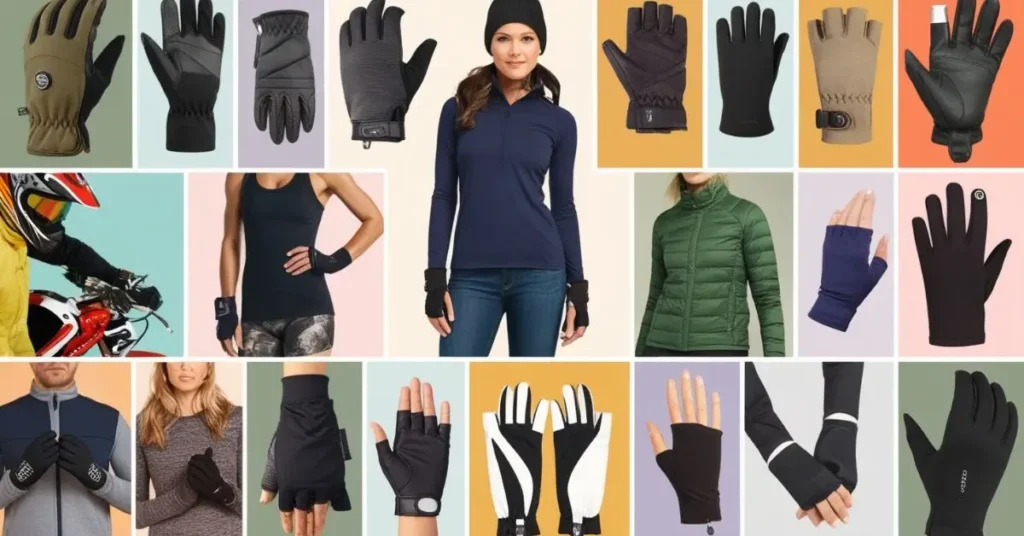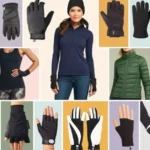Fingerless gloves have made their mark as both a practical and fashionable accessory. Whether used for warmth, style, or functionality, these gloves have a unique versatility that sets them apart from their full-fingered counterparts. From bikers and athletes to fashion enthusiasts and tech users, fingerless gloves serve a diverse audience. This article explores the history, types, uses, and style tips for fingerless gloves, providing a comprehensive guide to this popular accessory.
History of Fingerless Gloves
Fingerless gloves have a long and varied history. They were first seen in ancient Greece and Rome, where they were used primarily for warmth and practicality. In medieval times, fingerless gloves were often worn by laborers who needed protection for their hands while maintaining the dexterity required for their tasks. Over the centuries, they evolved into a symbol of status and fashion, particularly in the 19th century, when they were a staple of women’s fashion.
In the modern era, fingerless gloves became popular among cyclists and motorcyclists for their utility, offering a secure grip without sacrificing the ability to handle small objects. In the 1980s, fingerless gloves were popularized in mainstream fashion by pop culture icons and musicians, making them a symbol of edgy style.
Types of Fingerless Gloves
There are several types of fingerless gloves, each designed for specific purposes:
- Fashion Fingerless Gloves: These gloves are primarily used as a fashion statement. Made from materials like lace, leather, or cotton, they add an edgy or sophisticated touch to outfits. They are often adorned with embellishments like studs, zippers, or embroidery.
- Sport and Fitness Gloves: Fingerless gloves are widely used in sports such as weightlifting, cycling, and rowing. These gloves provide a strong grip, protect against blisters, and allow for better ventilation. Materials like neoprene, leather, and synthetic blends are commonly used for their durability and comfort.
- Winter Fingerless Gloves: Designed to keep hands warm while allowing for flexibility, these gloves are perfect for individuals who need to use their fingers frequently, such as phone users or photographers. They are typically made from wool, fleece, or knitted fabrics.
- Work Gloves: For tasks that require protection but also dexterity, such as carpentry, mechanics, or gardening, fingerless gloves are an excellent choice. They often include padded palms for added comfort and protection against rough surfaces.
- Tech Gloves: With the rise of touch screen devices, tech gloves have become popular. These gloves are designed with conductive materials on the fingertips, allowing users to operate smartphones and tablets without removing their gloves.
Benefits of Fingerless Gloves
- Enhanced Dexterity: The primary advantage of fingerless gloves is the freedom of movement they provide. They allow the wearer to perform tasks that require precision, such as typing, writing, or handling small objects, without the bulkiness of full gloves.
- Improved Grip: Many fingerless gloves, especially those designed for sports or work, offer enhanced grip. The exposed fingers can better sense textures and hold objects securely, making them ideal for activities that require a strong, tactile grip.
- Breathability and Comfort: Fingerles gloves are generally more breathable than full gloves, reducing the chance of sweaty hands. This makes them more comfortable for extended wear, especially in warmer environments.
- Versatility in Style: Fingerles gloves can easily be integrated into various fashion styles, from punk and gothic to chic and elegant. They are available in numerous materials and designs, allowing for creative expression and personal style.
- Accessibility: For individuals with disabilities or arthritis, fingerles gloves can provide warmth and support without restricting finger movement. They are easier to put on and take off compared to traditional gloves.
How to Style Fingerless Gloves
Fingerless gloves can be styled in countless ways to complement different outfits and occasions. Here are some tips for incorporating them into your wardrobe:
- Casual Outfits: For a laid-back look, pair knitted or cotton fingerles gloves with jeans, a casual jacket, and sneakers. This combination adds a touch of warmth and style without overpowering your outfit.
- Edgy and Punk Styles: Leather or studded fingerles gloves are perfect for creating an edgy, rock-inspired look. Pair them with a leather jacket, ripped jeans, and combat boots to channel a rebellious vibe.
- Elegant and Sophisticated: For a more refined appearance, opt for lace or satin fingerles gloves. These can be paired with evening dresses or tailored coats, adding a touch of vintage glamour to your outfit.
- Winter Wear: To stay warm while retaining functionality, combine wool fingerles gloves with your winter wardrobe. They work well with layered outfits, beanies, and scarves, keeping you cozy without sacrificing practicality.
- Work and Sport Attire: For gym sessions or outdoor activities, fingerles gloves made of durable, moisture-wicking materials are a practical addition. Match them with your workout gear or sports uniform for a cohesive look.
Care and Maintenance of Fingerless Gloves
Proper care is essential to prolong the life of your fingerles gloves. The maintenance required depends largely on the material:
- Leather Gloves: Clean with a damp cloth and use a leather conditioner regularly to keep them supple. Avoid getting them excessively wet, as this can damage the leather.
- Knitted and Wool Gloves: Hand wash in cold water with mild detergent and lay flat to dry. Avoid wringing them out, as this can cause them to lose their shape.
- Synthetic and Sport Gloves: These can typically be machine washed on a gentle cycle. Check the manufacturer’s instructions for specific care guidelines.
- Lace and Delicate Fabrics: Handle with care, and consider spot cleaning or hand washing in cool water. These materials are often delicate and can easily tear if mishandled.
The Future of Fingerless Gloves
The demand for fingerless gloves continues to grow, driven by innovations in materials and technology. We are seeing the development of gloves with advanced features, such as touchscreen compatibility and integrated sensors for fitness tracking. As sustainability becomes a greater concern, eco-friendly materials and ethical manufacturing practices are also gaining traction in the glove industry.
Moreover, with the rise of wearable technology, there is potential for fingerles gloves to incorporate smart features, like biometric sensors or wireless connectivity, turning them into multi-functional accessories.
Conclusion
Fingerless gloves are more than just a fashion statement—they are a versatile, functional accessory with a rich history and a promising future. Whether for style, warmth, or utility, there is a pair of fingerles gloves suited to every need and occasion. As they continue to evolve with advancements in technology and fashion, fingerles gloves will undoubtedly remain a popular choice for individuals seeking both form and function in their accessories.







